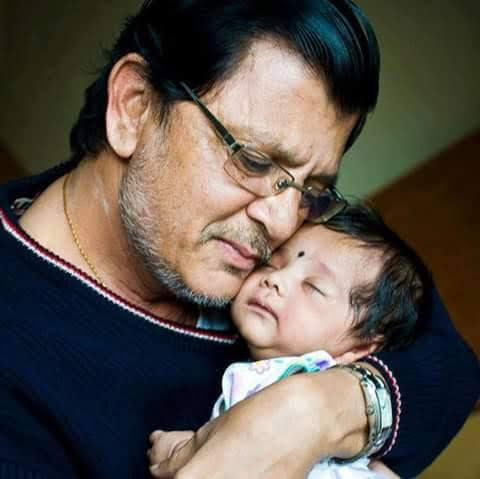Lord Narayana describes the inner meaning and procedures of the Gayatri Manta to Sage Narada.
The Gayatri mantra is from the Rig Veda.
The Gāyatrī Mantra, also known as the Sāvitrī mantra, is a highly revered mantra from the Rig Veda (Mandala 3.62.10)
Narayana explains Gayatri from Yajur, Sama and Atharva Vedas.
I am providing the Armor of the Gayatri Mantra.
This forms the Nyasa.

This is the Kavacha one has before chanting the Gayatri Mantra.
‘
Now hear the Risis, Chhandas, etc., of this Kavacha :–
Brahmâ, Visnu and Mahes’vara are the Risis;
the Rik, Yajus, Sâma and Atharva Vedas are the Chhandas;
the Paramâ Kalâ Gâyatrî of the nature of Brahmâ is the Devatâ;
“Tat” in Gâyatrî is the Vîja; “Bharga” is the S’akti; and “Dhîyah” is the Kîlaka; and its viniyoga (application) is in getting the Moksa (liberation.).
With the first four syllables touch the heart; with the next three letters touch the head;
with the next four letters touch the tuft on the crown of the head; with the next three
letters on the Kavacha; with the next four letters on the eyes and with the last four letters
make the Nyâsa, all over the body repeating “Astrâya Phat,” O Nârada! Hear now the
Dhyânam of Gâyatrî, that grants all desires.
The Gâyatrî Devî has five faces; one of which is of white colour; and the other four is of pearl, Vidruma, golden, and Nîlakântamani colour respectively.
Each face has got three eyes; on the head there is a crown of jewels and the digit of the Moon is shining there. Her body is composed of the twenty-four tattvas.
She has ten hands :– On the top right and left hands there are two lotuses; lower down, there are disc and conch shell; lower down, there are rope and skull; lower down, there are noose and goad; and on the bottom hands right and left she is making signs of “No fear” and “ready to grant boons.”
Thus meditating on S’rî Gâyatrî, one is to recite the Kavacha thus :–
Let the Gâyatrî Devî protect my front; Sâvitrî Devî protect my right;
the Sandhyâ Devî, my back and
the Devî Sarasvatî, my left.
Let my Mother Pârvatî Devî protect my quarters.
Let Jalas’âyinî protect the southeast;
Yâtudhâna Bhayankarî protect my South-west;
Pavamânavilâsinî my north-west;
Rudrarûpinî Rudrânî protect my north-east.
Let Brahmânî protect my top and
Vaisnavî protect my nether regions
. Let the word “Tat” in the Gâyatrî protect my legs;
“Savituh” protect my Knees;
“Varenyam,” protect my loins;
“Bhargah,” my navel.
Let “Devasya” protect my heart;
“Dhîmahî” protect my neck;
“Dhîyah,” protect my eyes;
“Yah,” protect my forehead;
“Nah” protect my head; and
“Prachodayât” protect the tuft on the crown of my head.
Again let the “Tat” of the twenty-four syllabled Gâyatrî protect my head;
“Sa,” protect my forehead;
“Vi” protect my eyes;
“Tu” my cheeks;
“Va,” protect my nostrils;
“Re,” my mouth;
“ni” protect my upper lip;
“Yah” protect my lower lip;
“Bha” within my face;
“rgo,” protect my cheeks;
“De,” my throat; “Va” my shoulders;
“Sya” my right hand;
“Dhi” my navel;
“ma,” my heart,
“Hi,” my belly;
“Dhî,” my navel;
“Yo” my loins;
“Yo”, my anus;
“nah,” my thighs,
“Pra,” my Knees;
“Cho” my shanks ,
“Da” my heels;
“Yâ” my legs;
and let “at” protect all my sides.
O Nârada! This divine Kavacha of the Devî Gâyatrî can baffle hundreds and thousands of obstructions and evils; can grant sixty-four Kalâs and liberation. By the glory of this Kavacha, man can become free from all evils and can attain the state of Brahmâ. Moreover whoever reads or hears this acquires the fruits of making a gift of a thousand cows.
( Devi Bhaavatham,Book 12,Chapter 3, Slokas to 25)
Source.




Leave a comment